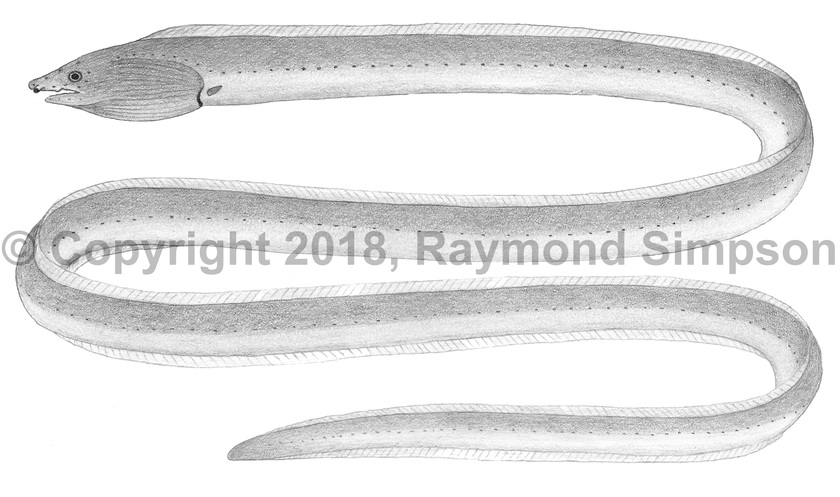
Common Name
Saint Paul Sand Eel
Year Described
Storey, 1939
Identification
Vertebrae: 190-196 (100-103 pre-anal)
Supraorbital pores: 1+3
Body extremely elongate and cylindrical in cross-section. Trunk length a little longer than tail (~50%). Snout pointed and overhangs jaw. Underside of snout flattened with a toothed (3 teeth) median groove reaching anterior nostril. Anterior nostril tubular on underside of snout. Posterior nostril opens as a small hole in mouth. Eye small over rear third of jaw. Jaw downturned and small. Teeth small and uniserial in both jaws. Vomerine teeth in two rows. Intermaxillary teeth present. Head pores well developed. Gill pouches and cheeks strongly grooved. Gill openings low on body and strongly converging anteriorly. Dorsal and anal fins present but low. Dorsal fin begins on top of head. Pectoral fin minute (base 25-33% length of gill opening) and low on body. Caudal fin absent. Tail tip hard and pointed. Lateral line complete.
Color
Body strongly bicolored dark brown and cream, with a sharp demarcation along lateral line. Pores not lighter. Gill opening dark. Dark brown on back of head and blotching around eyes. Rest of head pale. Dorsal fin white with a thin dark edge rearward.
Size
Maximum size to 69.7cm TL.
Habitat
Inhabits shallow sandy or muddy coastal waters.
Range
Eastern to southern Brazil. Also the eastern Atlantic.
References
Caires, R. A., J. L. D. Figueiredo, & R. Á. Bernardes. 2008. Registros novos e adicionais de teleósteos marinhos na costa brasileira. Papéis avulsos de Zoologia, 48, 213-225.
Moreno, F., A. Acero P, & M. Grijalba-Bendeck. 2016. A new species of sand eel genus Bascanichthys (Anguilliformes: Ophichthidae) from the Caribbean. Boletín de Investigaciones Marinas y Costeras-INVEMAR, 45(1), 7-14.
Other Notes
The only Bascanichthys known from Brazil. The southern analogue to B. bascanium.